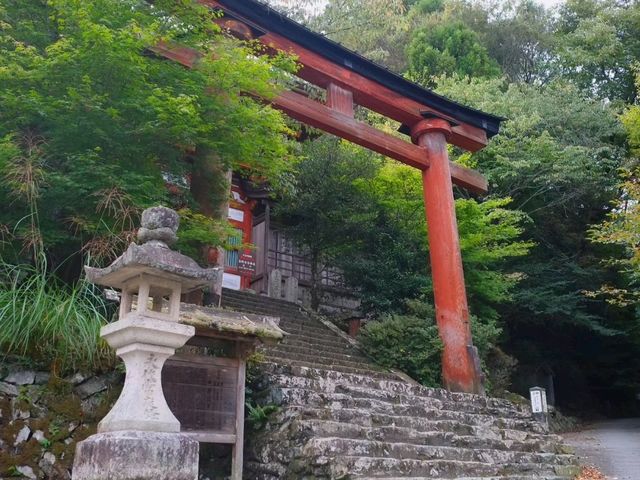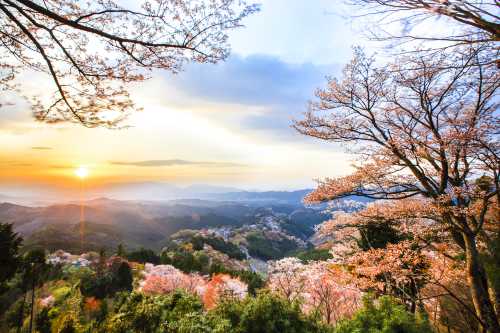Popular Trip Moments
Tokyo's Early Cherry Blossoms... Just Like a Spring Scene from a Manga | Cherry Blossom Heaven on a Hill | Mount Yoshino: A Sacred Mountain Draped in Sakura Splendor | 🌸 Sakura Overload: My Epic (and Slightly Chaotic) Day Trip to Mt. Yoshino! 🏔️ | Mount Yoshino Cherry Blossoms: Japan’s Most Epic Sakura Destination | Yoshinoyama: Japan’s Sacred Mountain of a Thousand Blossoms | Kikusui Ryokan, Yoshino Mountain | Cherry Blossoms Guide to Yoshino Mountain | [Japan's most beautiful cherry blossom spot🌸] The cherry blossoms of Mount Yoshino invite you to a "paradise" | Yoshino Mountain: A Spring Encounter | Mount Yoshino, Nara | [Nara] A complete guide to enjoying Japan's best cherry blossoms, Mount Yoshino! | Cherry Blossom Viewing at Mount Yoshino | I was really amazed by the Thousand Cherry Blossoms at Yoshino Mountain! | [Nara/Yoshino] A spectacular view of cherry blossoms that Japan is proud of! Mount Yoshino, a World Heritage Site 🌸 | [Nara] Visit the World Heritage Site, Yoshino | Chasing Sakura at Mt. Yoshino | Nara Cherry Blossom Viewing Guide: A Tale of Cherry Blossoms and Deer in the Ancient Capital! | Reach the pinnacle of cherry blossom viewing in Japan and encounter 30,000 cherry trees. | Mount Yoshino, Nara | Nara's Mount Yoshino: A Sea of 30,000 Cherry Blossoms in Full Bloom! | [Nara Prefecture] Mount Yoshino, a famous ancient cherry blossom spot in Japan | Nara Cherry Blossom and Deer Viewing Guide - Spring Limited! | Reject the tourist traps and discover your own cherry blossom map! | MOUNT YOSHINO | JAPAN’S SACRED SEA OF CHERRY BLOSSOMS | Sakura Symphony from Mount Yoshino’s Slopes | sea of blossoms | 7-Day Tour in Japan: A Complete Guide to Popular Attractions | ภูเขาโยชิโนะ (Mount Yoshino)
Popular Travel Types
Recommended Attractions at Popular Destinations
Bangkok attraction near me | Manila attraction near me | Tokyo attraction near me | Taipei attraction near me | Hong Kong attraction near me | Seoul attraction near me | Kuala Lumpur attraction near me | Los Angeles attraction near me | Shanghai attraction near me | New York attraction near me | Shenzhen attraction near me | Osaka attraction near me | Singapore attraction near me | London attraction near me | Guangzhou attraction near me | San Francisco attraction near me | Beijing attraction near me | Macau attraction near me | Bali attraction near me | Jakarta attraction near me | Paris attraction near me | Ho Chi Minh City attraction near me | Istanbul attraction near me | Phuket attraction near me | Chicago attraction near me | Seattle attraction near me | Toronto attraction near me | Orlando attraction near me | Cebu attraction near me | Chiang Mai attraction near me
Popular Attractions
Universal Studios Japan | Singapore Oceanarium | Ain Dubai | Yu Garden | Sky Views Observatory | Universal Beijing Resort | Man Mo Temple | Shantang Street | Sentosa | Hoan Kiem Lake | Tiger PARK Phuket | Shanghai Wild Animal Park | Tai Hu Yuantouzhu Scenic Spot | Xi'an Yanta Christianity Jingxin Church | Chatuchak Weekend Market | Aficion Chocolate Village | MAX Muay Thai Stadium Pattaya | House of the Black Heads | YELLOWKORNER NLDPAC | Miniwaukan Disc Golf Course | Bholi Maa Mandir | Heath House Farm | Capelotte de Saint-Mary | Koyo Golf Center | Shiva Mandir | Longview Public Library | Library De Pauillac | Cachoeira do Quilombo - face Norte da Canastra | Safari World Bangkok | Safari Park Shenzhen
Popular Restaurants in Yoshino
Kikokuya | Hyotaro | Ashibi | Yoshinokuzu Yasokichi | Sasaoka Shokudo Kintetsuyoshino Ekimae | Sakamotoya | Yoshinoyamatofudokoro Hayashitofu | Kuzuya Nakai Shumpudou | Yamatoan | Koda Fresh Fish Shop Kuzuho Denden | Nakasyo Spa & Mensaryo Restaurant | Hiraso Main Store | Asahikan | Nyoirin-Jiochadokoro | Amano-Ya | Cafe Hinatabokko | Nishizawaya | Uguisu | Hananishiki | Yoshino Rest House | Raman Kawa | Hanasaka | Tsujimura | Hanayama Yamamoto | Hokoan | Grand | Shizukatei | Hide No Kaki No Ha Sushi | Yokoya Hosen-Do | Kikokuya
Popular Ranked Lists
Top 3 Luxury Hotels in Nidwalden | Popular Premium Hotels in Washington County | Popular Premium Hotels in Pattani Province | Top 10 Local Restaurants in Minsk | Popular Best Things to Do in Jurong | Popular Premium Hotels in La Jacetania | Popular Local Restaurants in Dongguan | Popular Best Things to Do in Taishan | Top 3 Best Things to Do in Zhoukou | Popular Best Things to Do in Huainan | Top 10 Local Restaurants in Koh Samet | Popular Premium Hotels in State of Mexico | Popular Luxury Hotels Near Porto Azzurro | Popular Premium Hotels in Merricks North | Popular Premium Hotels in Flinders | Top 5 Best Things to Do in Xiangshan | Popular Premium Hotels in Oriente de Asturias | Top 10 Local Restaurants in Orlando | Top 4 Best Things to Do in Yingkou | Top 19 Local Restaurants in Singapore | Popular Premium Hotels in Velipoje | Top 10 Local Restaurants in The Rocks | Popular Local Restaurants in Bangkok | Popular Premium Hotels in Cotswold District | Top 10 Local Restaurants in Amman | Top 5 Premium Hotels in Nord-Pas-de-Calais | Top 3 Best Things to Do in Guigang | Popular Premium Hotels in Mbabane | Popular Luxury Hotels in Freycinet National Park | Popular Premium Hotels in Oudtshoorn
Payment Methods
Our Partners
Copyright © 2025 Trip.com Travel Singapore Pte. Ltd. All rights reserved
Site Operator: Trip.com Travel Singapore Pte. Ltd.
Site Operator: Trip.com Travel Singapore Pte. Ltd.






















